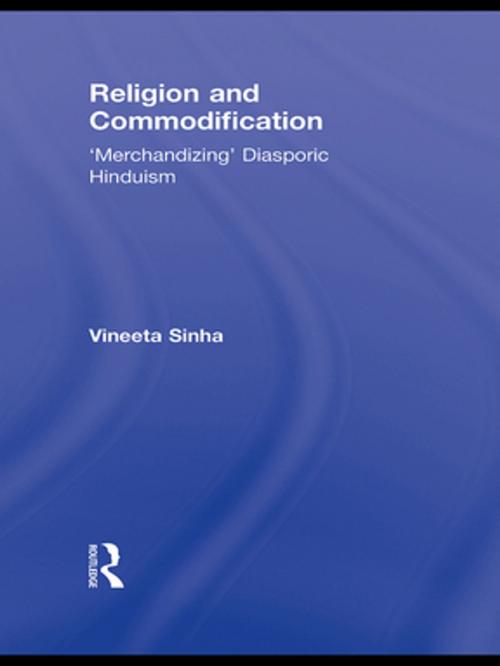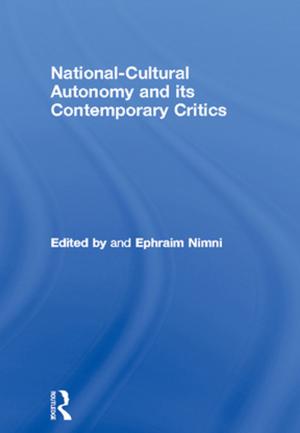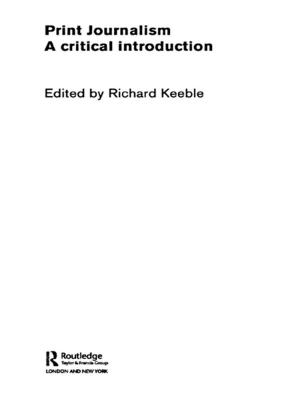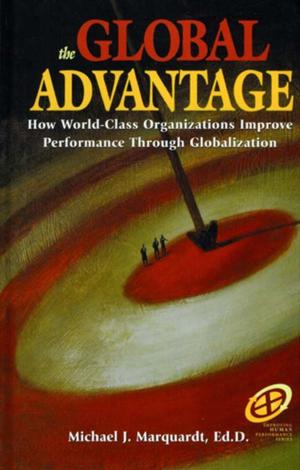Religion and Commodification
'Merchandizing' Diasporic Hinduism
Nonfiction, Social & Cultural Studies, Social Science, Sociology, Marriage & Family, Religion & Spirituality, Eastern Religions, Hinduism| Author: | Vineeta Sinha | ISBN: | 9781136908248 |
| Publisher: | Taylor and Francis | Publication: | April 13, 2011 |
| Imprint: | Routledge | Language: | English |
| Author: | Vineeta Sinha |
| ISBN: | 9781136908248 |
| Publisher: | Taylor and Francis |
| Publication: | April 13, 2011 |
| Imprint: | Routledge |
| Language: | English |
Sustaining a Hindu universe at an everyday life level requires an extraordinary range of religious specialists and ritual paraphernalia. At the level of practice, devotional Hinduism is an embodied religion and grounded in a materiality, that makes the presence of specific physical objects (which when used in worship also carry immense ritual and symbolic load) an indispensable part of its religious practices.
Traditionally, both services and objects required for worship were provided and produced by occupational communities. The almost sacred connection between caste groups and occupation/profession has been clearly severed in many diasporic locations, but importantly in India itself. As such, skills and expertise required for producing an array of physical objects in order to support Hindu worship have been taken over by clusters of individuals with no traditional, historical connection with caste-related knowledge. Both the transference and disconnect just noted have been crucial for the ultimate commodification of objects used in the act of Hindu worship, and the emergence of an analogous commercial industry as a result. These developments condense highly complex processes that need careful conceptual explication, a task that is exciting and carries enormous potential for theoretical reflections in key fields of study.
Using the lens of ‘visuality’ and ‘materiality,’ Sinha offers insights into the everyday material religious lives of Hindus as they strive to sustain theistic, devotional Hinduism in diasporic locations--particularly Singapore, Malaysia, and Tamilnadu--where religious objects have become commodified.
Sustaining a Hindu universe at an everyday life level requires an extraordinary range of religious specialists and ritual paraphernalia. At the level of practice, devotional Hinduism is an embodied religion and grounded in a materiality, that makes the presence of specific physical objects (which when used in worship also carry immense ritual and symbolic load) an indispensable part of its religious practices.
Traditionally, both services and objects required for worship were provided and produced by occupational communities. The almost sacred connection between caste groups and occupation/profession has been clearly severed in many diasporic locations, but importantly in India itself. As such, skills and expertise required for producing an array of physical objects in order to support Hindu worship have been taken over by clusters of individuals with no traditional, historical connection with caste-related knowledge. Both the transference and disconnect just noted have been crucial for the ultimate commodification of objects used in the act of Hindu worship, and the emergence of an analogous commercial industry as a result. These developments condense highly complex processes that need careful conceptual explication, a task that is exciting and carries enormous potential for theoretical reflections in key fields of study.
Using the lens of ‘visuality’ and ‘materiality,’ Sinha offers insights into the everyday material religious lives of Hindus as they strive to sustain theistic, devotional Hinduism in diasporic locations--particularly Singapore, Malaysia, and Tamilnadu--where religious objects have become commodified.















